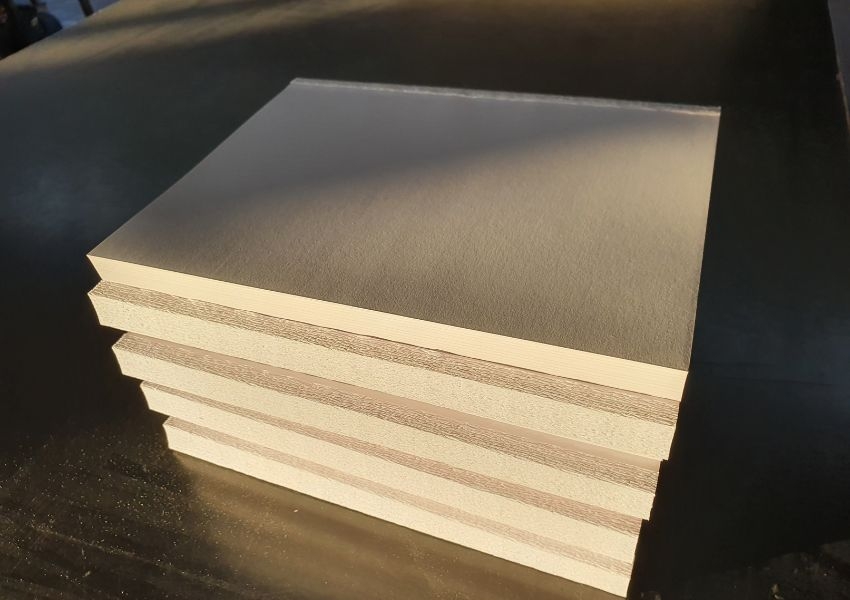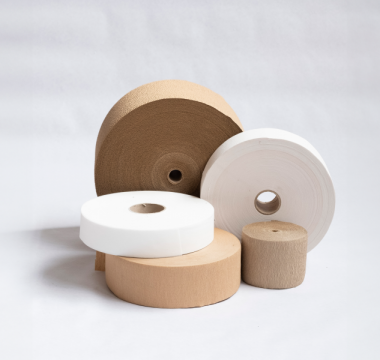Why Is Crepe Paper Weight Key in Bookbinding Paper?
In industrial bookbinding paper applications, every component plays a precise role. Crepe paper, thanks to its mechanical properties and ability to adapt to curved or tensioned surfaces, is a high-performance technical material. Its weight, measured in grams per square meter (g/m²), determines the paper’s density, rigidity, or malleability. Choosing the appropriate weight means optimizing:
- Adhesion to the spine or cover surface
- Compatibility with industrial adhesives and glues
- Tear resistance during pressing or sewing processes
- Workability on automated machinery
It is also important to consider the synergy between crepe paper and other key elements of hardcover bookbinding paper, such as spine board or mull cloth. If you´re interested in how this component influences strength and aesthetics in premium books, we recommend our article: Spine Board or Mull Cloth: Strength and Style in Premium Hardcover Binding.
Types of Binding and Recommended Weights
Hardcover Binding
In editorial bookbinding paper projects such as hardcover books, premium albums, or notebooks, crepe paper is commonly used on the spine or as structural reinforcement. Typical weights range between 75 and 110 g/m², depending on book size and the base paper used.
Technical Recommendations:
- 75 g/m²: Ideal for medium-sized, thinner books
- 90 or 110 g/m²: Recommended for large or frequently handled books (e.g., photo albums, art books) where greater support and durability are needed
Softcover Binding
In flexible bindings using sewing or gluing, crepe bookbinding paper is used to reinforce the spine and enhance adhesive bonding. The goal is to balance flexibility with tensile strength.
Suggested weight: around 75 g/m²
Artisan or Artistic Binding
In manual or artistic bookbinding paper projects, crepe paper may serve structural or decorative functions. In this case, weight choice depends on the design, folding technique, and desired effect.
- Low weights (40–50 g/m²): Easily adaptable, ideal for folds, collage, or decorative reinforcements
- Medium weights (60–70 g/m²): Offer more body while retaining flexibility—useful for exposed structures or visible spines
Factors That Influence the Choice of Weight
1. Book Size and Thickness
Larger or thicker book blocks require heavier crepe bookbinding paper to ensure proper spine support and shape retention. A large-format book with many pages needs a higher weight to handle the stress of opening and closing.
2. Type of Adhesive or Glue
Hot melt, vinyl, or PUR glues behave differently on fibrous materials like crepe bookbinding paper. Heavier weights may offer better anchoring but can hinder absorption and cause unwanted stiffness. Pre-tests are essential to identify the right balance for your adhesive type.
3. Machinery Compatibility
On automated binding lines, crepe bookbinding paper that is too thin may wrinkle or jam, while overly thick sheets can resist folding or gluing. It’s vital to select a weight within your equipment’s tolerances.
4. Tensile and Tear Resistance
Crepe bookbinding paper must withstand mechanical stress during application, especially in pressing or stitching. Heavier weights offer more resistance but lower elasticity. For frequently handled books, medium-to-high weights are advisable.
How to Know if You’re Making the Right Choice
Run Pilot Tests
Before choosing the crepe bookbinding paper weight for a full print run, test different weights on real samples. Evaluate:
- Behavior of the paper during application
- Adhesive performance
- Ease of folding and handling
- Final structural and visual results
Consult the Technical Supplier
At Arrosi, we support our clients based on the technical requirements of each project. If you need crepe bookbinding paper with specific elongation, creping pattern, or a particular color, we’ll help you select the most suitable solution from our industrial range.
Custom Crepe Bookbinding Paper Solutions
At Arrosi, we produce made-to-order crepe bookbinding paper, customizable in:
- Weight: from 30 to 110 g/m², depending on the application
- Creping pattern: affects elasticity, thickness, and resistance
- Color: natural, white, or technical colors for aesthetic integration
- Treatments: moisture resistance, printability, or enhanced adhesion
This ensures a product aligned with your functional and visual needs, whether for editorial bookbinding paper, luxury packaging, or specific technical solutions.
Crepe Bookbinding Paper, a Technical Cornerstone in Binding
Choosing the right crepe bookbinding paper weight is no minor decision. It’s a technical factor that affects the durability, performance, and appearance of the final product. A well-chosen weight optimizes production and enhances the usability of the bound book or notebook.
At Arrosi, we support you in developing tailor-made crepe bookbinding paper solutions, ensuring quality, performance, and technical compatibility in every project.




